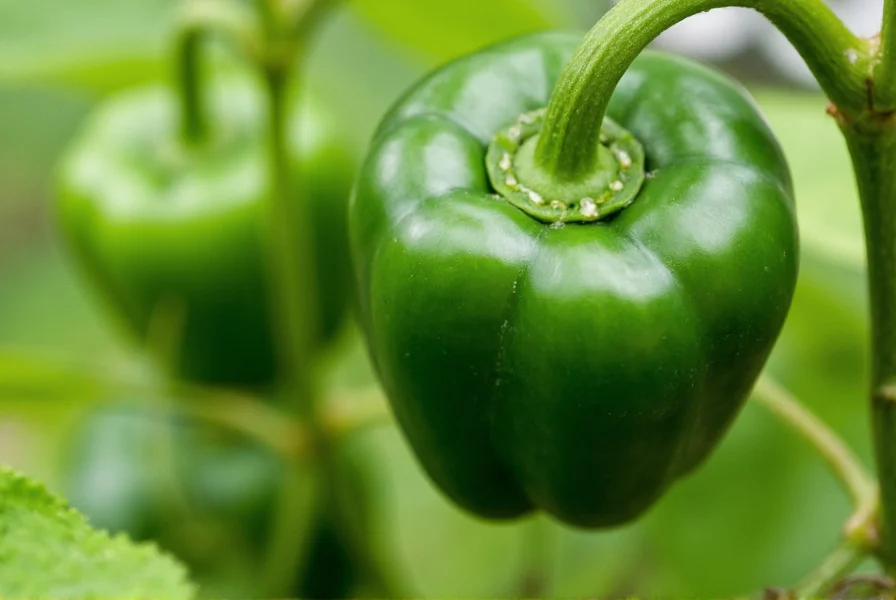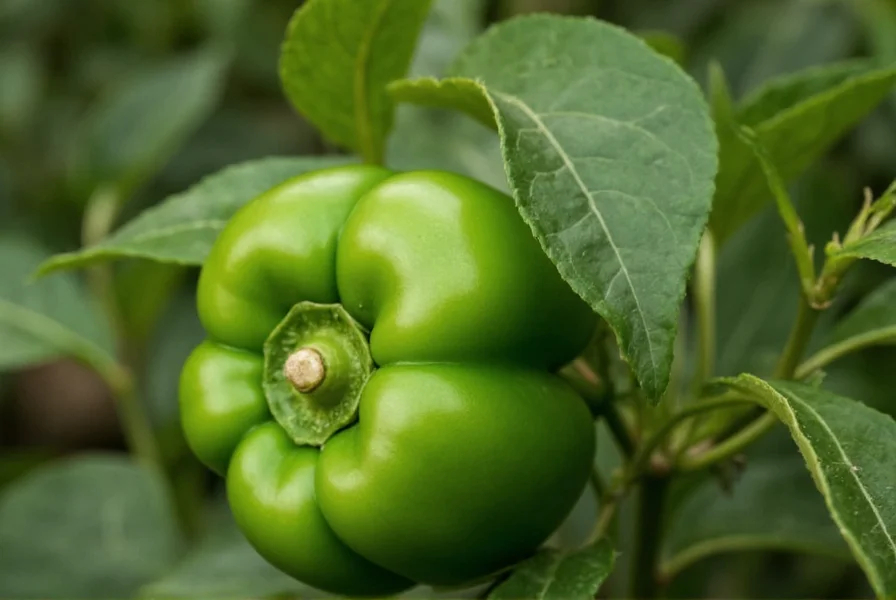Understanding poblano peppers begins with recognizing their distinctive characteristics. These large, dark green peppers measure 4-6 inches long with a heart-shaped profile and thick walls. Unlike hotter varieties such as jalapeños, poblano peppers deliver a gentle warmth that enhances dishes without overwhelming heat. Their flavor profile features earthy, slightly fruity notes with hints of tobacco and raisin, especially when roasted.
Heat Level and Flavor Profile
Measuring between 1,000-2,000 Scoville Heat Units, poblano peppers sit at the milder end of the chili spectrum. For comparison, they're significantly less spicy than jalapeños (2,500-8,000 SHU) but offer more complexity than bell peppers (0 SHU). The heat concentrates in the seeds and white membranes, so removing these reduces spiciness while preserving flavor.
When roasted, poblano peppers develop a smoky depth that transforms their flavor profile. This process caramelizes natural sugars, creating notes of coffee and dried fruit. Many cooks prefer roasted poblano peppers for dishes like chiles rellenos or rajas con crema, where the enhanced flavor shines.
Culinary Applications
Chefs value poblano peppers for their culinary versatility. They're essential in traditional Mexican dishes including:
- Chiles Rellenos - Stuffed with cheese or meat, battered, and fried
- Mole sauces - Provides foundational flavor in complex sauces
- Rajas con Crema - Sliced peppers sautéed with cream and onions
- Guacamole - Adds subtle heat without overpowering avocado
When substituting poblano peppers, consider both heat level and flavor profile. Bell peppers work for zero-heat applications, while Anaheim peppers (500-2,500 SHU) offer similar mild heat. For dried applications, ancho chiles (the dried form of poblano) provide authentic flavor in mole and stews.
| Pepper Type | Scoville Range | Flavor Profile | Best Substitution Ratio |
|---|---|---|---|
| Poblano | 1,000-2,000 | Earthy, slightly fruity | 1:1 (fresh) |
| Ancho (dried) | 1,000-2,000 | Smoky, raisin-like | 2:1 (dried:fresh) |
| Anaheim | 500-2,500 | Grassy, mild | 1:1 |
| Jalapeño | 2,500-8,000 | Sharp, bright | 1:2 (use half) |
Growing and Harvesting Poblano Peppers
For gardeners interested in growing poblano peppers, these plants thrive in warm climates with full sun exposure. They require 65-80 days to mature from transplanting. The peppers start dark green and can be harvested at this stage, but allowing them to ripen to deep red develops sweeter flavors and higher nutrient content.
When harvesting, use scissors to cut stems rather than pulling peppers from the plant. This prevents damage to the plant's delicate branches. Poblano peppers grow best in well-draining soil with consistent moisture - they're particularly sensitive to both drought and waterlogging.

Nutritional Benefits
Poblano peppers deliver impressive nutritional value beyond their culinary appeal. A single raw poblano (45g) contains:
- 109% of daily vitamin C needs
- 20% of vitamin B6
- Significant vitamin A and potassium
- Only 12 calories
These nutrients support immune function, vision health, and electrolyte balance. The capsaicin content, though mild compared to hotter peppers, still offers potential metabolic benefits and anti-inflammatory properties.
Storage and Preservation Techniques
Proper storage extends poblano pepper freshness. Keep unwashed peppers in the crisper drawer of your refrigerator for 1-2 weeks. For longer preservation:
- Freezing - Roast, peel, and freeze in airtight containers (6-8 months)
- Drying - Create authentic ancho chiles by air-drying or using a dehydrator
- Pickling - Preserves flavor while adding tangy dimension
When roasting poblano peppers at home, place them directly over a gas flame or under the broiler until charred on all sides. Transfer to a covered bowl for 10 minutes, then peel off the blistered skin. This technique maximizes flavor for roasted poblano pepper recipes like chiles rellenos or cream sauces.
Common Questions About Poblano Peppers
What's the difference between poblano and ancho peppers?
Poblano peppers are the fresh form, while ancho peppers are simply dried poblanos. When poblano peppers ripen to red and are dried, they become anchos with a sweeter, fruitier flavor profile. Anchos measure about 1,000-2,000 Scoville units, the same heat level as fresh poblanos, but their flavor becomes more complex with notes of raisin and tobacco.
How can I reduce the heat of poblano peppers?
To reduce poblano pepper heat, remove all seeds and white membranes (placenta) where capsaicin concentrates. Soaking sliced peppers in salt water for 30 minutes can further reduce heat. For maximum mildness, choose younger green poblanos rather than riper red ones, as heat increases with maturity. Cooking methods like roasting and peeling also decrease perceived heat.
Can I substitute bell peppers for poblano peppers?
Yes, bell peppers make an acceptable substitute when you want zero heat but similar texture. Use them in stuffed pepper recipes or rajas con crema where heat isn't essential. However, bell peppers lack the earthy depth of poblanos, so add 1/4 teaspoon smoked paprika per pepper to mimic some flavor complexity. For recipes requiring roasted flavor, bell peppers won't provide the same results as roasted poblanos.
When is poblano pepper season?
Poblano peppers typically reach peak season from late summer through early fall (August-October) in North America. However, thanks to greenhouse cultivation and imports, fresh poblanos remain available year-round in most supermarkets. The best quality appears during summer months when locally grown peppers hit markets. Dried anchos maintain consistent quality throughout the year.
Why do some poblano peppers taste bitter?
Bitterness in poblano peppers usually results from improper storage or overripeness. Exposure to cold temperatures below 45°F (7°C) can cause bitterness. Some bitterness also comes from the seeds and white membranes - removing these eliminates most bitter notes. When roasting, ensure even charring without burning, as burnt skin creates unpleasant bitterness. Choosing firm, glossy peppers without wrinkles reduces bitterness risk.











 浙公网安备
33010002000092号
浙公网安备
33010002000092号 浙B2-20120091-4
浙B2-20120091-4